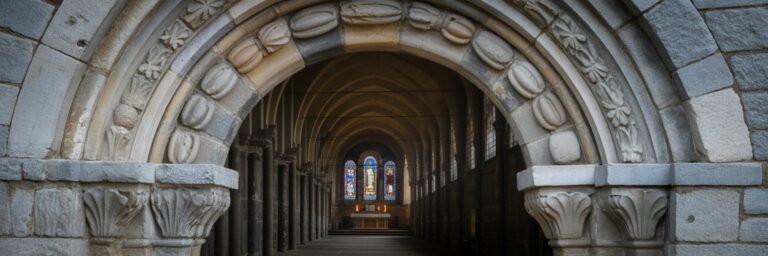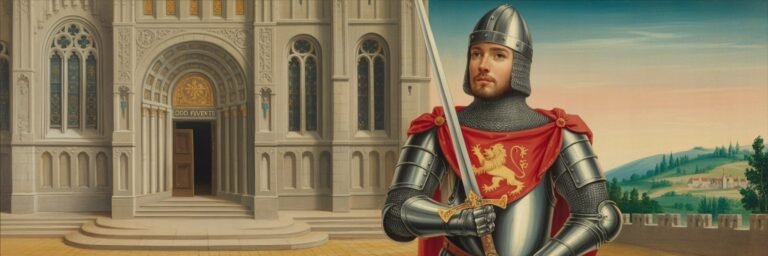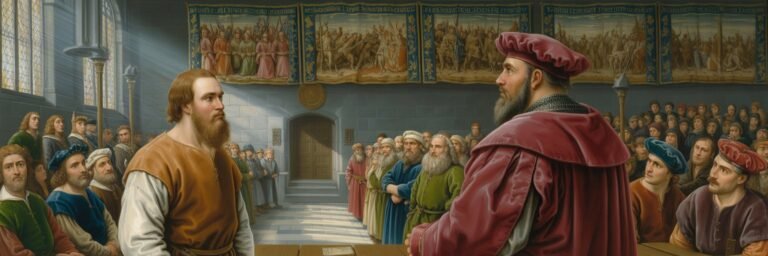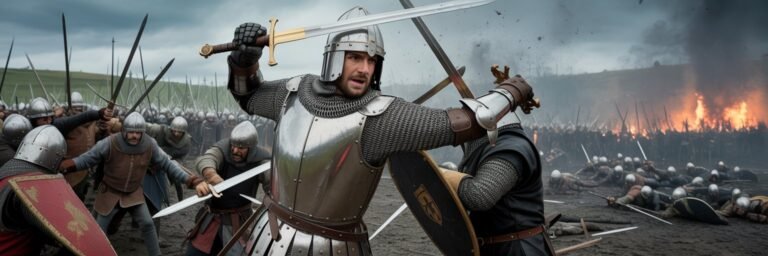INTRODUCTION
Era-defining characters, ground-breaking achievements, resounding voices in the wind of change; they are the individuals who shape the course of history, dictating the narrative with their voices, their victories and often, their vices. As we traverse the labyrinthine corridors of the Middle Ages, a pivotal epoch teetering between decline of classical civility and the rise of modernity, particular figures emerge from the deepening shadows. These enigmatic individuals are the torchbearers of a bygone era, illuminating history with their influence. Today, under the scrutinous gaze of The History Compass, we ascend on an intellectual expedition to dissect the lives, influence, and enduring legacies of notable luminaries from the Middle Ages.
HISTORICAL BACKGROUND
The Middle Ages, spanning 5th through 15th century AD, marked the period between the fall of Rome and the dawn of the Renaissance. This thousand-year epoch was an era of transition, vacillating between darkness and light, stagnation and progression. It was an age of surreal chivalry, unpredictable ravages, meticulous intellectual pursuits, and sacred establishments.
THEORIES AND INTERPRETATIONS
Divergent interpretations exist on who were the most influential figures. Widely acknowledged figures include Charlemagne, Thomas Aquinas, Eleanor of Aquitaine, and Genghis Khan.
Charlemagne, or Charles the Great, laid the foundation for modern France and Germany. His crowning by the Pope Leo III marked the unfolding of a symbiotic relationship between church and state, inspiring countless potentates in their pursuits of divine right of kings.
St. Thomas Aquinas merged theology with Greek philosophy, creating a comprehensive body of work, the “Summa Theologica,” which over time served as bedrock for the Catholic Church’s philosophies. His harmonization of faith and reasoning fostered a new wave of intellectual awakening.
Eleanor of Aquitaine, a prolific woman in the royal backdrop, leveraged her influence over two kingdoms—France and England. She played a crucial role in spearheading the Second Crusade, legitimizing the power of queens and their political sway through her actions.
Lastly, Genghis Khan, that historic embodiment of conquest, laid the groundwork for the largest contiguous land empire in history, with his influence felt from Asia to Eastern Europe, thusly spearheading a revolution of transcontinental exchange.
MYSTERIES AND CONTROVERSIES
Potential discrepancies surrounding the true impact of these figures lend a certain mystique to their historical interpretations. Charlemagne’s establishment of a grand empire is said to often overlook the violent, forced conversions of conquered peoples. His reign can thus also be seen as emboldening autocratic impulses.
Similarly, Aquinas’s intellectual pursuit, although instrumental in shaping the Church’s philosophy, often gets accused of diluting Christian orthodoxy with pagan Aristotelian logic. His philosophical amalgamation can be seen as initiation to scholasticism that had potential spiritual consequences.
Eleanor of Aquitaine, though lauded for her ruling prowess, was mired in controversies, including her alleged instigation of her sons’ rebellion against their father. Her legacy is an intertwining tapestry of strength and subversion.
Genghis Khan’s rule, although marking the zenith of Mongol power, comes with tales of massive slaughter and destruction that sparked heated debates around his brutal means of securing his empire.
SYMBOLISM AND CULTURAL SIGNIFICANCE
Yet, each medieval figure brought significant symbolic and cultural transformations. Charlemagne, dubbed as ‘Pater Europae,’ fathered the cultural renaissance of the 8th and 9th centuries, nurturing the Carolingian Renaissance that left a trail of cultural and educational reforms across Europe. Eleanor of Aquitaine symbolized women’s power in a male-dominated feudal society, projecting the possibility of gender equality.
Aquinas’s work, despite its perceived dilution, afforded Catholicism a well-structured, logical presentation that symbolized intellectual advancement. Genghis Khan united the Mongol tribes and accelerated cultural integration through the establishment of the Silk Road, symbolizing the importance of unification and economic expansion.
MODERN INVESTIGATIONS
Modern historical inquiry continues to shine light on these legendary figures. Reinterpretations of Charlemagne’s reign point towards progressive nation-building, while Aquinas’s work is hailed for its imprint on modern legal philosophy. Eleanor’s influence stands out as a beacon of women empowerment, while Genghis Khan’s leadership style garners attention in management studies. It’s these contradicting lenses of modern investigation that silhouette the legacy of these timeless figures against the canvas of history.
LEGACY AND CONCLUSION
Each figure bequeathed a substantial legacy. Charlemagne’s reign set the precedent for church-state union. Aquinas’s seamless blend of Greek philosophy with Christian beliefs marked a significant shift in religious reasoning. Eleanor of Aquitaine’s indomitable spirit echoes through centuries, enshrining the power of women in the annals of history. Genghis Khan’s legacy is etched deep into the earth, imprinting an influence that extended far beyond his lifetime, laying the path along which the world moved forward.
The Middle Ages, like the phoenix, rose from the ashes of the fallen Roman Empire to redefine human civilization in unforeseen ways. Its influential figures – both infamous and revered – have left an indelible mark on our collective historical narrative, emboldening future generations with their fallibilities and their strengths, their controversies and their achievements. Behind every enduring tale, every heartfelt eulogy, stands a figure from the Middle Ages, shaping, stirring, reigning with an influence that persists, ardent and unyielding, in the face of passing time.






